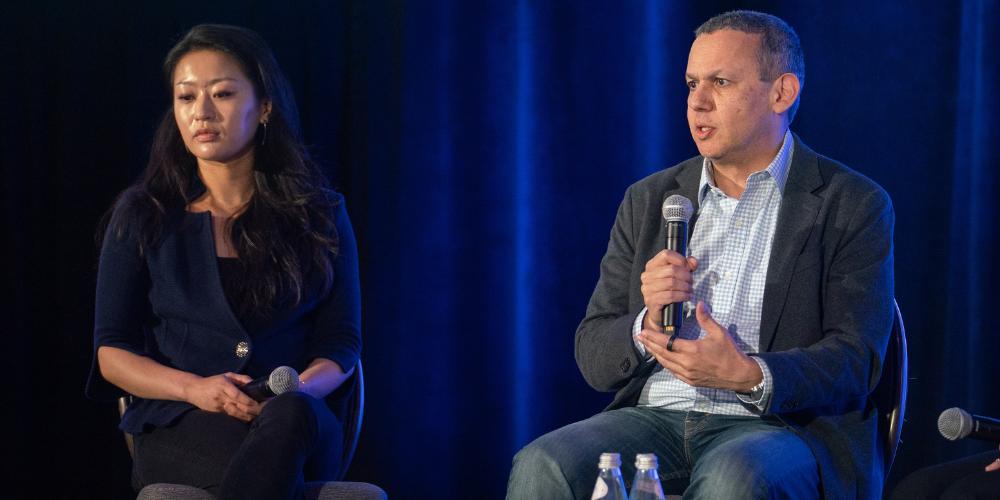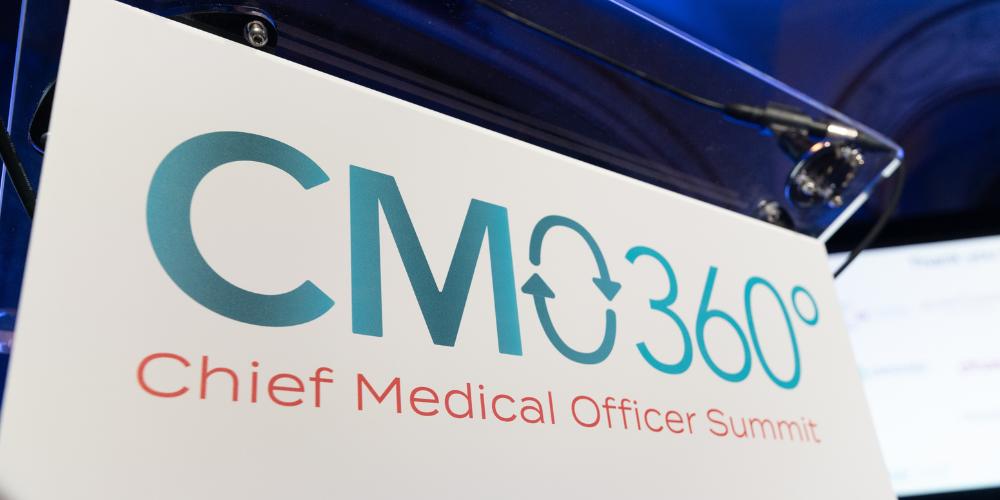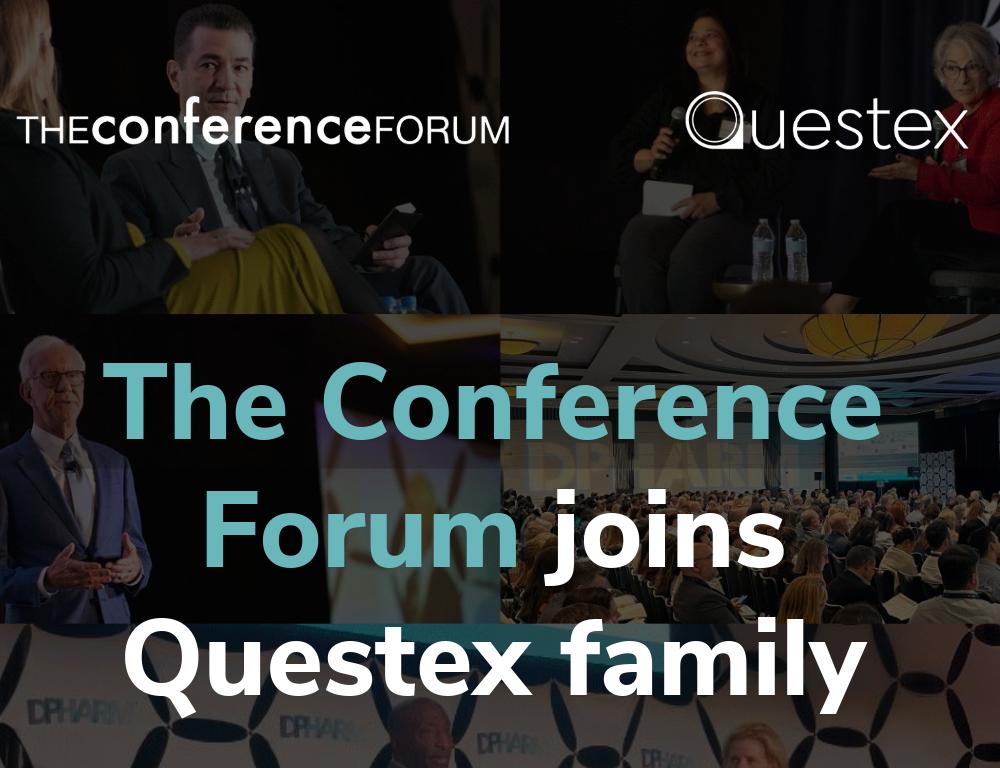Morphic Therapeutic’s Acquisition by Eli Lilly From the CMO Perspective
In July 2024, Eli Lilly acquired Morphic Therapeutic for $3.2B. Former Morphic Therapeutic CMO Simon Cooper, MBBS, now CMO of LifeMine Therapeutics, shares his experience through the M&A process and offers advice for Biotech CMOs in M&A and partnership conversations within their own organizations.

What does the M&A process look like for CMOs of biotech companies?
Much of what we do as CMOs is not just strategy and the management of the medical side of the organization but representing the organization and the programs to various other parties like investors and the board. In terms of M&A, CMOs are often talking to various companies who may or may not be expressing interest in their companies.
When you speak to the pharma companies – at conferences like JPM and throughout the various stages of your companies – you try to generate interest in what you are doing and try to prepare the ground, so that when a merger or acquisition is appropriate, people are already familiar with your company.
The CMO has a key role in all of those discussions. You spend a lot of time speaking to investors and potential partners and potential acquirers to address as many of the questions and concerns as you can along the way, to represent the exciting science we do in the biotech setting, and to build that interest, so that at the appropriate time there is an easier discussion.
Can you tell us about your recent M&A experience?
Most recently, I was involved in the acquisition of Morphic Therapeutic by Eli Lilly and Company. The difference for us was that although we’d had discussions with Eli Lilly and other companies in that kind of cadence like I described, when they actually approached us, the timing was surprising, as we were in the midst of a phase two trial and expected more interest to be generated as we got nearer to the end of the trial or after results were available. While that initial approach was unusual, the rest of the process was very similar to the standard processes of M&A.
A team came on-site where we presented the data and shared what information we could, and they told us they were interested and that they wanted to delve deeper and think about a due diligence process. From that point, my whole job became managing that side of things, from the due diligence to regular meetings with their team and answering their questions.
When you’re involved in this process, you need to recognize the audience for whom you are answering the questions. Sometimes that means making sure you understand exactly what they are asking or that you understand the intent behind the question, so that you provide as much information as is appropriate and you can ensure the answer is understood. Otherwise, you will spend a lot of time going backwards and forwards trying to get down through the minutia.
How is the conversation with a potentially acquiring company different to the conversations you have with investors?
When we speak to VCs, we’re trying to bring capital into the company. So, we need to represent what we’re doing and the way we’re doing it and recognize that VCs are very scientific in their approach to us. When you flip to an M&A process, the due diligence team and the pharma company know how to develop drugs. Fundamentally, that is what they do. So, they have an idea of what they want to see in this program from the start. As a biotech, you may or may not have completed some of those parts of development and even if completed, you may have done it differently than they would have – partly because you don’t have the staffing they do and partly because when you work in a relatively cost-constrained environment, you have to prioritize what you do first.
Therefore, you spend a lot of time in the M&A process providing the due diligence team with as much information as you have and trying to help them understand where the missing pieces of information are, and therefore what they may need to do to bring the package up to where they would like it.
"The CMO has a key role in all of those discussions. You spend a lot of time speaking to investors and potential partners and potential acquirers to address as many of the questions and concerns as you can along the way, to represent the exciting science we do in the biotech setting, and to build that interest, so that at the appropriate time there is an easier discussion."
How can CMOs best support the M&A process?
From the CMOs point of view, you are not just a technical expert, but often you’ve had previous experience in large pharma on the other side of the M&A perspective, and so you should try to get ahead of the questions you’re expecting rather than waiting to be asked.
The more involved and collegiate and collaborative you can be, the better this process will work for you. Being present during conversations with the board, legal team and other relevant parties allows you to better represent the compound, program and team without over- or under-sharing information.
How do you effectively delegate and share information with your team while working on these M&A conversations?
I was fortunate that Morphic was in the process of running a clinical trial that was stable in operation and needed very little oversight from me. That allowed me to fully commit to the process of the acquisition. But controlling that information within the organization is incredibly important.
At a very early stage in the process, we identified the people that would be on a need-to-know basis for the fact that we were in discussions. That's why clinical related diligence all came through me. You keep that group as small as possible because you don't necessarily want to give people false expectations, but you also want to respect the wishes of the third party that doesn't necessarily want people to know what they're doing in terms of acquisition. Each of us at the C-level knew which members of our respective teams we would need to involve and at what level we would need to involve them. As the process evolved and the level of questioning became more detailed, we returned to that list to see whether we needed to revise it to bring more people under the tent. You have to be very careful with this information, so that it doesn't go through your company like wildfire, because often these discussions don’t go anywhere.
"You spend a lot of time in the M&A process providing the due diligence team with as much information as you have and trying to help them understand where the missing pieces of information are, and therefore what they may need to do to bring the package up to where they would like it."
What are the potential obstacles and common mistakes and how can you avoid them?
It’s about being as close to the other team as you can be and recognizing who on that team is going to be the person who needs the information you are providing. Identifying those key team members allowed me to reach out to them directly if I had specific concerns or questions.
At some stage, you will reach the point where you have provided as much information as you think you should, but there may still be more information they want to see. At that point, you need to try to work out what piece of information you need to provide that will allow the process to progress. We worked quite hard initially to try and work out what that would be, which allowed us internally to make sure that we could get alignment both from a senior management perspective and a board perspective as to what we were prepared to do to advance these conversations.
How do you balance the different wants and needs of the small biotech and large pharma throughout the conversation?
As you think about your clinical trials, it’s important to recognize that you are designing the trial for a number of audiences. While you’re thinking about the regulatory process, you also need to keep other audiences in mind and think about the kind of data you will need to show, which will be interesting and informative from an investment or an acquisition point of view. What would you want to see if you were sitting on that side of things?
For example, at Morphic, we were running a trial on inflammatory bowel disease. The way you assess those endpoints is standard. However, there is an independent read of endoscopy that one should think about and there are a number of companies who can provide that service to you. We deliberately chose to work with the best-known company in that space, so any potential partners/acquirers would be reassured that they could trust the data. That conversation actually came up as part of our diligence.
Recognizing and trying to address potential questions and providing data for multiple audiences in a cost-effective manner is often difficult but spending that extra bit to work with the right vendor that does the specialist analysis generates trust that will be worth it in the end.
"To make the process run as smoothly as possible you need to help them understand your company, people, assets and programs. They will have a slightly different focus from the diligence team. And this is a place where you can advocate for your team to help them land as successfully as possible."
What does the process look like after the public announcement?
Once you publicly announce the intention for a company to be acquired, there is a period of time before close to give shareholders time to consider the deal. At that point, you have to manage the internal team and make sure that work is still being done. It can be an unsettling time for a company and the people working internally, because there are questions about whether they have to start looking for a new job.
Within your own teams, you need to try to reassure people that there isn’t any immediate change. During those conversations with the acquiring company, you should have tried to understand from them what their intentions are for the team and what the integration process will look like. After the public announcement, partly what you’ll be doing is thinking about what happens to the people and programs and also the assets that are in discovery and/or preclinical testing.
Once the deal closes, your job is to try to keep people invested in a company and compound and program that all of a sudden may belong to somebody else. As a small biotech, many of your team members will have been there from the formation of the company and will have a personal connection to a program. You need to try to manage that transition, so it doesn’t feel like it’s being ripped from them.
I knew from a quite early stage that I would be transitioning out after the acquisition, and so I wanted to make sure that the people on my team were offered the chance to remain and that we could make this as soft a landing as possible by integrating them into the larger organization as best as possible. For example, trying to prepare them for the differences between working in a smaller biotech like Morphic to one of the largest companies in our industry and how to manage those differences.
What about the integration process?
One of the most surprising things for most people when they do this kind of process is that prior to closing the deal, you spend a lot of time answering questions for the diligence team, and then when you have been acquired, you’re given a whole new set of people to work with in the integration team. They will know very little about you and your organization and programs, and it can almost feel like you’re starting the process all over again in answering all their questions.
To make the process run as smoothly as possible you need to help them understand your company, people, assets and programs. They will have a slightly different focus from the diligence team. And this is a place where you can advocate for your team to help them land as successfully as possible.
Eli Lilly’s acquisition of Morphic was one of the largest acquisitions in the last two years. How can companies maximize their acquisition value?
Some of it is serendipity with your asset, but some of it is about designing your trials with those different audiences in mind. If you can recognize who those people are early on, then think about how you speak with them and what kind of data set they will find compelling. Morphic was an immunology company developing a drug for inflammatory bowel disease as a lead molecule, so that narrows down the number of companies from an acquisition point of view.
As you are designing your program, you need to do the work upfront to choose the indication and how you will do that in a way that shows them the obvious market opportunity and marketability. If you want people to spend money and buy it, they need to understand the opportunity on the other side of acquisition. By laying that groundwork at a very early stage and choosing your indication carefully, you can make your compound the most attractive, shiniest, newest object to get people interested.








